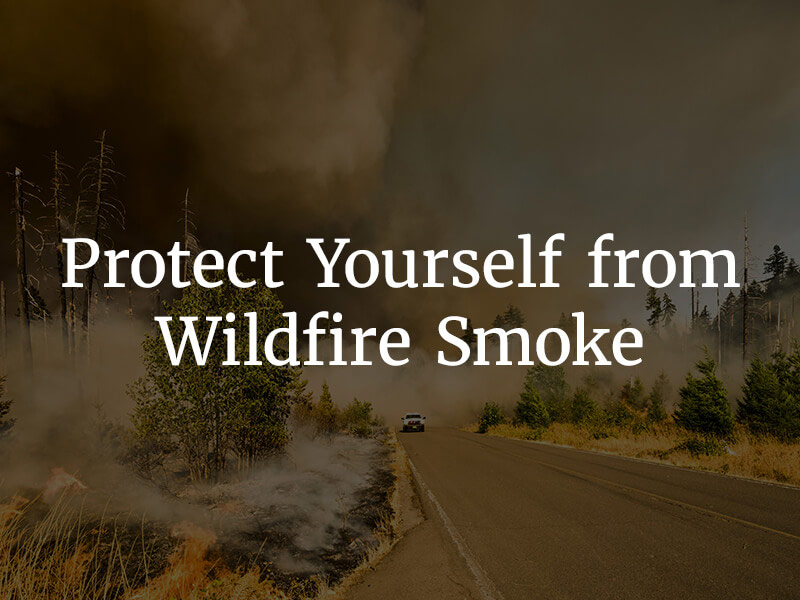How to Protect Yourself From Wildfire Smoke
Posted in Uncategorized on November 15, 2019
As a resident of California, you are no stranger to wildfires. Every year, several major wildfires make headlines for the immense destruction they leave in their wake. From January 1st, 2019 to November 10th, 2019, the California Department of Forestry & Fire Protection reported 5,366 fires across 128,299 acres of land in the state. Even if your area is not experiencing a wildfire directly, a conflagration elsewhere in the state could affect the air quality where you live. Take steps to protect yourself and your family from wildfire smoke.
Tips During a Wildfire
Wildfire smoke can contain thousands of chemicals from the materials the fire broke down. Fire can release these chemicals into the air, along with a complex mixture of dangerous gases. Inhaling wildfire smoke could lead to a range of health problems, including lung diseases. If you are in a wildfire zone, pay close attention to wildfire reports and warnings. If you get an alert warning you of fires in your area or poor air quality, take steps to protect yourself from breathing in wildfire smoke.
- Filter your indoor air. If you are not in immediate danger, but wildfire smoke is affecting the air quality near you, invest in a high-quality indoor air filtration system. An air purifier could keep your indoor air as clean as possible.
- Close your windows. Minimize the amount of smoky air that makes it inside your home by closing all windows and doors. Run your air conditioner if you have one, but close its fresh-air intake so it does not pull outdoor air in.
- Reduce air toxins. Avoid burning candles, using a gas stove or lighting a fireplace, as these can all increase indoor air pollution.
- Evacuate, if necessary. Take wildfire warnings and orders to evacuate seriously. Do not delay. Follow out evacuation orders from officials and go to a designated evacuation center in your city.
- Stay low. If a wildfire has threatened your home, evacuate immediately. Crawl as low to the ground as possible while you escape to avoid breathing in chemicals and smoke. The smoke will curl around your ceiling first, then cycle lower.
Dust masks do not block out wildfire smoke. Do not rely on them for protection. Paper dust masks found at hardware stores cannot trap small smoke particles or prevent them from entering your lungs. If you have one available, use a respirator while you evacuate to protect your lung health during a wildfire. N95 and P100 respirators can protect the lungs from wildfire smoke and ash.
Who Is at Risk?
Although anyone could suffer irreparable lung damage and other health complications from breathing in wildfire smoke, some populations are more vulnerable to smoke-related dangers than others. Sensitive groups could be more prone to respiratory problems due to smoke in the air or overall lower outdoor air quality. These groups include children, elderly adults, and people with a history of heart or lung diseases. Sensitive groups could be at a higher risk of suffering serious health issues because of wildfire smoke. If you are one of them, invest in a respirator and track air reports to know when to leave.
Check Air Reports
You might not always be able to tell on your own whether the air quality is safe for breathing during or after a wildfire. You also do not want to find out by breathing in harmful particles. The best way to protect yourself and your family from smoke-related illnesses and diseases is to keep up with air quality reports in your region.
Listen to and watch the local news for warnings about wildfires, smoke or air quality. You can also check in with a national reporting service such as AirNow.gov for real-time updates. Take all public health messages seriously. Evacuate your area if the air quality is low enough to pose a threat to you or your family. Breathing in wildfire smoke could cause permanent damage.

